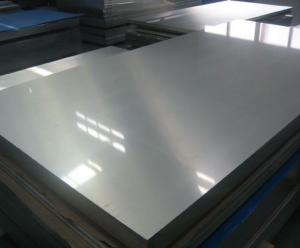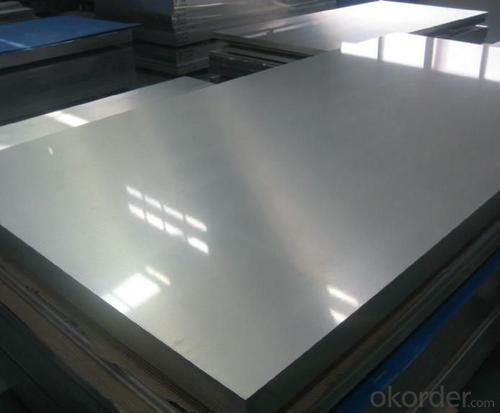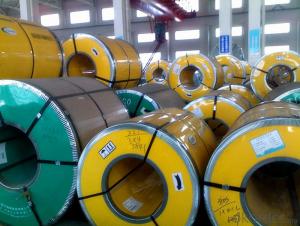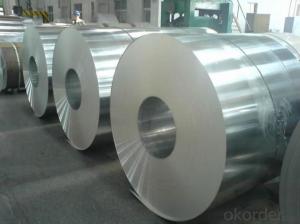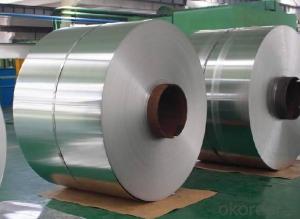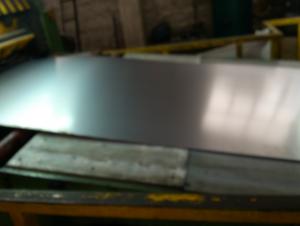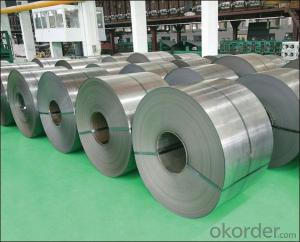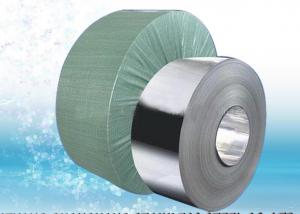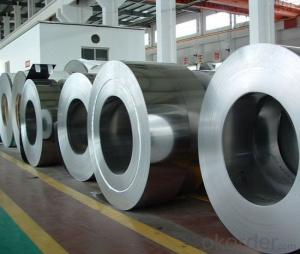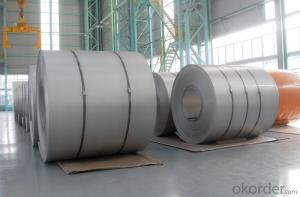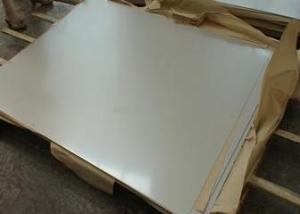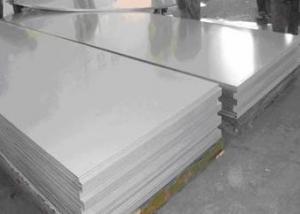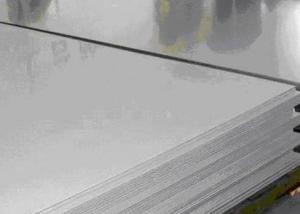AISI 201 Stainless Steel Plate
- Loading Port:
- China Main Port
- Payment Terms:
- TT or LC
- Min Order Qty:
- 1 Ton m.t.
- Supply Capability:
- 2000 Tons Per Month m.t./month
OKorder Service Pledge
OKorder Financial Service
You Might Also Like
AISI 201 Stainless Steel Sheet
1. Chemical composition of AISI 201 Stainless Steel Sheet
C | Si | Mn | P | S | Ni | Cr |
max0.15 | max1.00 | 5.50-7.50 | max0.06 | max0.03 | max1.00 | 16.00-18.00 |
2. Mechanical properties of AISI 201 Stainless Steel Sheet
Yield Strength | Tensile | Elongation | Hardness (HV) | Hardness (HRB) |
245 | 640 | 40 | 253 | 100 |
3. Standard of AISI 201 Stainless Steel Sheet: AISI, ASTM, GB, EN, DIN, JIS
4. Surface of AISI 201 Stainless Steel Sheet: 2B, NO.1, BA, NO.4, Hairline, SB, Mirror finish, Anti-skid, Cherkered etc.
5. Size of AISI 201 Stainless Steel Sheet:
Thickness: 0.3-3mm (cold rolled), 3-40mm (hot rolled)
Width: 1000mm or 1219mm or 1240mm for cold rolled, 1500mm for hot rolled.
Length: As customers' request.
6. MOQof AISI 201 Stainless Steel Sheet: 1 Ton
7. Payment terms of AISI 201 Stainless Steel Sheet:T/T or L/C
8. Packing of AISI 201 Stainless Steel Sheet: Seaworthy package with wooden or Iron pallets with the paper and the steel strip,
or as customers' request.
9. Delivery time of AISI 201 Stainless Steel Sheet: Usually about 7 days after we confirming the order, or according to your quantity.
If you have any question or demand, pls feel free to contact me.
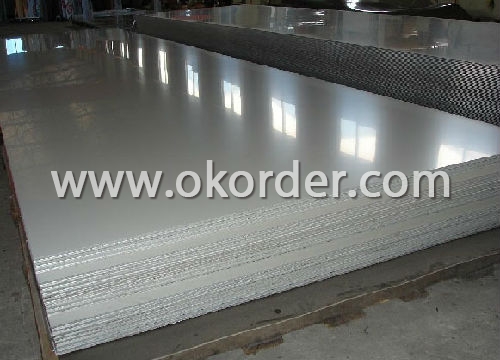
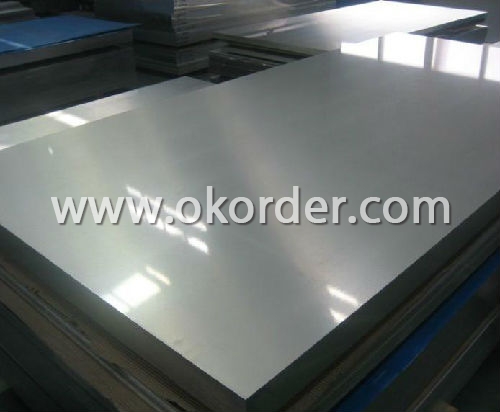
- Q: Are 111 stainless steel strips resistant to scaling at elevated temperatures?
- Yes, 111 stainless steel strips are resistant to scaling at elevated temperatures. The composition and properties of 111 stainless steel make it highly resistant to oxidation and scaling when exposed to high temperatures. This type of stainless steel contains a higher percentage of chromium, which forms a protective oxide layer on the surface of the strips. This oxide layer acts as a barrier, preventing the steel from reacting with oxygen and other elements in the atmosphere. As a result, the 111 stainless steel strips maintain their integrity and resist scaling even when subjected to elevated temperatures.
- Q: Can stainless steel strips be used in the food processing equipment industry?
- Yes, stainless steel strips can be used in the food processing equipment industry. Stainless steel is highly resistant to corrosion, easy to clean, and has excellent hygienic properties, making it suitable for use in food processing equipment. It is commonly used for manufacturing food handling and preparation equipment, such as conveyor belts, cutting blades, mixing tanks, and storage containers.
- Q: How does the price of stainless steel strips vary?
- The price of stainless steel strips can vary depending on several factors. Firstly, the price is significantly influenced by the grade or quality of stainless steel used in the strips. Stainless steel comes in various grades, ranging from common ones like 304 and 316 to higher-end grades like 430 and 904L, each with different properties and resistance to corrosion. Generally, the higher the grade of stainless steel, the higher the price of the strips. Another factor that affects the price is the width, thickness, and length of the stainless steel strips. Thicker and wider strips require more raw material and processing, which increases the cost. Moreover, the length of the strips can impact the price because longer strips may require special handling during transportation and storage. The price of stainless steel is also influenced by market demand. When demand is high, prices tend to increase, and when demand is low, prices may decrease. Market dynamics, such as global supply and demand, trade tariffs, and economic conditions, can all contribute to fluctuations in the price of stainless steel strips. Lastly, the inclusion of additional services or treatments can impact the price. Surface finishes like brushed, polished, or coated strips may have higher costs due to the additional processing steps involved. Similarly, specialized treatments such as heat treatment, edge conditioning, or slitting can also affect the price. Therefore, to determine the exact price of stainless steel strips, it is essential to consider factors such as the grade, dimensions, market conditions, and any additional treatments required.
- Q: What is the formability of stainless steel strips?
- Stainless steel strips are widely regarded as having good formability. Their excellent mechanical properties enable them to be shaped and molded into intricate geometries. This is due to their high ductility and low work hardening rate. Stainless steel strips can be easily bent, stretched, and molded into various shapes without any risk of cracking or breaking. However, it is important to note that the formability of stainless steel strips may vary depending on factors such as the specific grade and thickness of the material, as well as the processing conditions and techniques employed. When assessing the formability of stainless steel strips, it is crucial to take into account factors like composition, grain structure, and surface condition. In summary, stainless steel strips are often the preferred choice in industries like automotive, construction, and manufacturing, where good formability is of utmost importance.
- Q: How do stainless steel strips resist staining?
- Stainless steel strips resist staining due to the presence of chromium in their composition. The chromium forms a protective layer on the surface of the steel, known as chromium oxide, which acts as a barrier against corrosion and stains. This layer prevents the steel from reacting with oxygen, moisture, and other corrosive substances, ensuring a long-lasting and stain-resistant quality.
- Q: Can stainless steel strips be used in the oil refinery equipment?
- Yes, stainless steel strips can be used in oil refinery equipment. Stainless steel is a highly durable and corrosion-resistant material, making it suitable for use in harsh environments such as oil refineries. It has excellent resistance to corrosion, high temperatures, and chemical exposure, which are important factors in the oil refining process. Stainless steel strips can be used in various components of oil refinery equipment such as heat exchangers, pipes, tanks, and valves, ensuring their longevity and functionality in the refinery operations. Additionally, stainless steel is easy to clean and maintain, making it a preferred choice in the oil refining industry.
- Q: Are stainless steel strips easy to clean?
- Yes, stainless steel strips are easy to clean. Stainless steel is known for its non-porous and smooth surface, which makes it resistant to stains and easy to wipe clean. You can simply use a mild detergent or soap and water to clean stainless steel strips. Additionally, stainless steel is also heat-resistant, so you can use various cleaning methods like steam cleaning or even sterilizing them in boiling water. Overall, stainless steel strips are a low-maintenance material that is durable and easy to keep clean.
- Q: Can stainless steel strips be used in pulp and paper industries?
- Yes, stainless steel strips can be used in pulp and paper industries. Stainless steel is highly resistant to corrosion and has excellent strength and durability, making it ideal for various applications in these industries such as forming, cutting, and packaging machinery. Additionally, stainless steel strips can withstand high temperatures and exposure to chemicals, making them suitable for use in harsh environments commonly found in pulp and paper production.
- Q: Are stainless steel strips suitable for pressure piping?
- Yes, stainless steel strips are suitable for pressure piping. Stainless steel is known for its excellent corrosion resistance, high strength, and durability, making it a preferred material for various applications, including pressure piping. Stainless steel strips can withstand high pressure and temperature conditions, making them suitable for use in industries such as oil and gas, chemical processing, and power generation. Additionally, stainless steel strips offer superior resistance to both internal and external corrosion, ensuring the integrity and longevity of the pressure piping system.
- Q: Can stainless steel strips be stamped or engraved?
- Certainly! Stamping or engraving stainless steel strips is indeed possible. Stainless steel possesses great adaptability, enabling it to be effortlessly stamped or engraved with diverse patterns, logos, letters, or numbers. The process of stamping entails the application of pressure on the steel strip using a die, resulting in the formation of a distinct shape or pattern. Conversely, engraving involves the removal of material from the surface to craft a design. Both techniques offer the opportunity to enhance stainless steel strips with decorative or practical elements, rendering them highly suitable for an extensive array of applications across various industries, including automotive, aerospace, electronics, and jewelry.
1. Manufacturer Overview
| Location | Shandong,China |
| Year Established | 2005 |
| Annual Output Value | Above US$5.3 Million |
| Main Markets | Europe, China |
| Company Certifications | ISO9001:2000 |
2. Manufacturer Certificates
| a) Certification Name | |
| Range | |
| Reference | |
| Validity Period |
3. Manufacturer Capability
| a) Trade Capacity | |
| Nearest Port | Tian Jin |
| Export Percentage | 30% |
| No.of Employees in Trade Department | 40 People |
| Language Spoken: | English;Chinese |
| b) Factory Information | |
| Factory Size: | Above 50,000 square meters |
| No. of Production Lines | Above 8 |
| Contract Manufacturing | OEM Service Offered;Design Service Offered |
| Product Price Range | Average |
Send your message to us
AISI 201 Stainless Steel Plate
- Loading Port:
- China Main Port
- Payment Terms:
- TT or LC
- Min Order Qty:
- 1 Ton m.t.
- Supply Capability:
- 2000 Tons Per Month m.t./month
OKorder Service Pledge
OKorder Financial Service
Similar products
Hot products
Hot Searches
Related keywords
